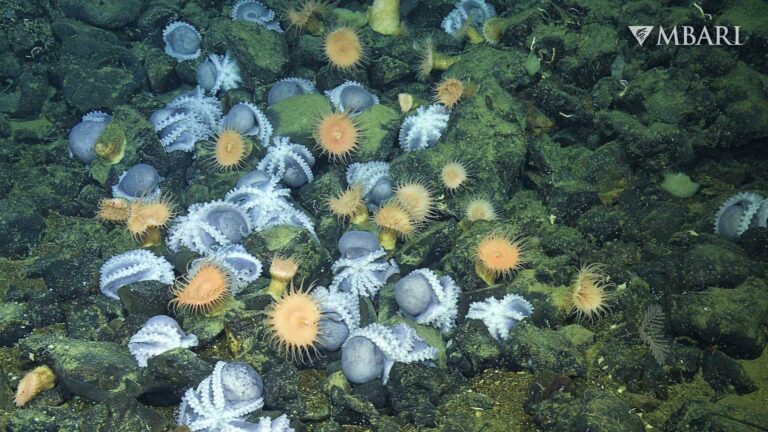It’s five years since many thousands of octopuses were discovered nesting together deep off the California coast – the largest-known such aggregation on Earth.
Then, three years ago, a scientific team led by Monterey Bay Aquarium Research Institute (MBARI) started monitoring what it called the “Octopus Garden” to find out what made the site so attractive for the cephalopods, usually thought of as solitary – and now it has produced its report.
Octopus Garden lies 3.2km deep on a small hill near the base of Davidson Seamount, an extinct undersea volcano 80 miles south-west of Monterey. More than 6,000 octopuses have been counted in a single section there, with at least 20,000 thought to be present at any one time.
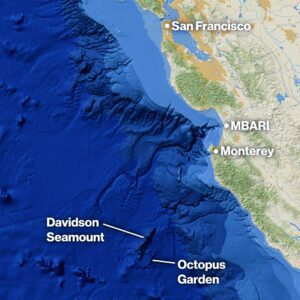

And now the site has been confirmed as one of a handful of known deep-sea octopus nurseries, where warmth from deep hydrothermal springs increases the metabolism of females and their broods and dramatically cuts the time required for incubation.
Researchers believe this shorter brood period greatly reduces the risk of developing octopus embryos being injured or eaten by predators.

Leg-up for baby octopuses
The octopuses are Muusoctopus robustus, dubbed pearl octopuses by MBARI researchers because of the appearance of nesting individuals from a distance.
MBARI’s deep-sea ROV Doc Ricketts carried out 14 dives on which only adult male and female octopuses developing eggs and hatchlings were observed. With no evidence of intermediate-sized individuals being present, or of octopuses feeding, the team was able to conclude that pearl octopuses aggregated at the site solely to mate and nest.
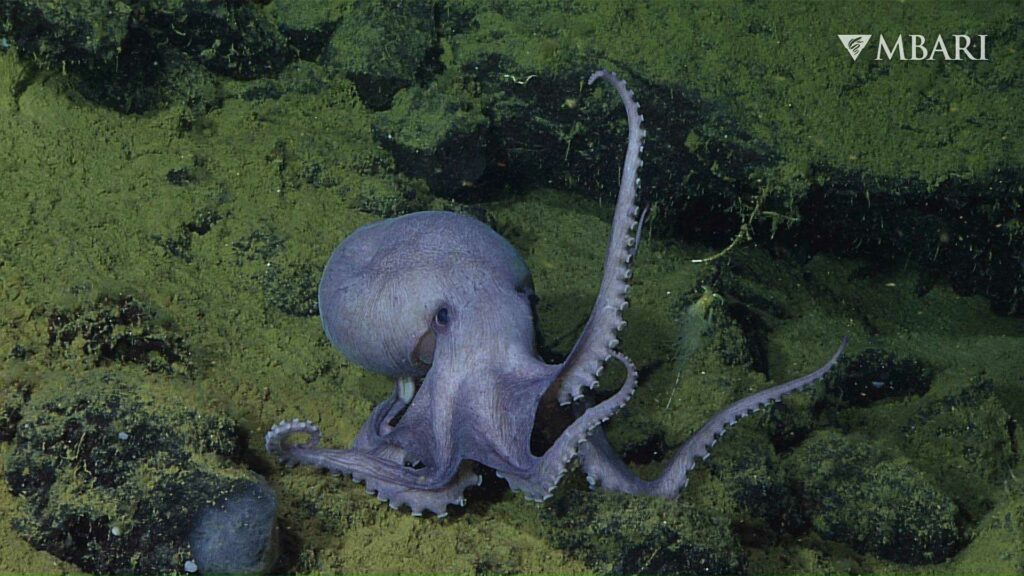
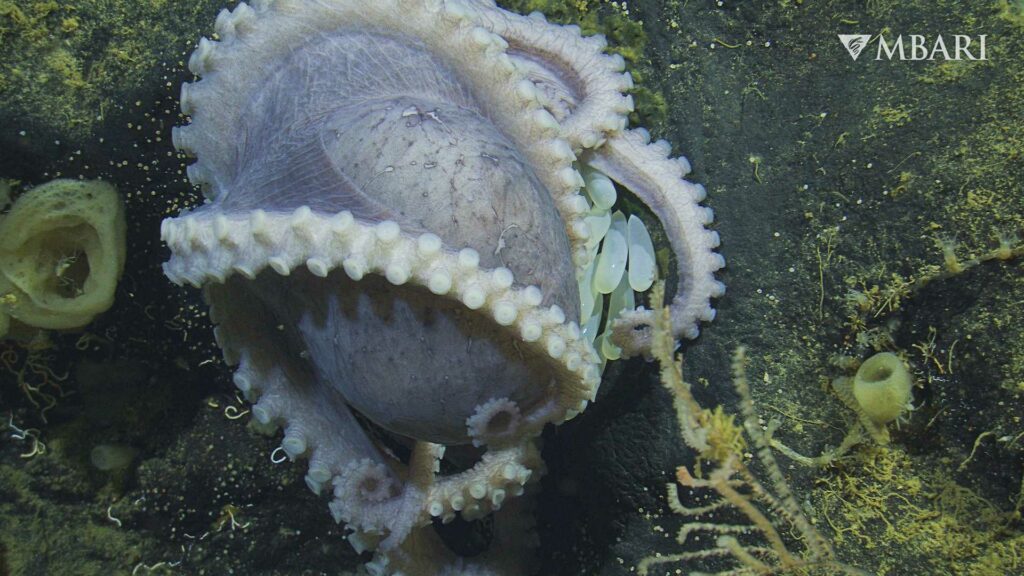
The nests are clustered in crevices bathed by hydrothermal springs emitting 11°C fluid – in contrast to the ambient water temperature of 1.6°C. If they were laid in the cooler water, pearl octopus eggs might be expected to take 5-8 or even more years to hatch.
Filming the nesting mothers using a 4k camera, the scientists were surprised to find that the eggs of individual octopuses identified through scars and other distinguishing features hatched in less than two years.
“The deep sea is one of the most challenging environments on Earth, yet animals have evolved clever ways to cope with frigid temperatures, perpetual darkness and extreme pressure,” said MBARI senior scientist and the study’s lead author Jim Barry.
“Very long brooding periods increase the likelihood that a mother’s eggs won’t survive. By nesting at hydrothermal springs, octopus moms give their offspring a leg-up.”
Predators and scavengers
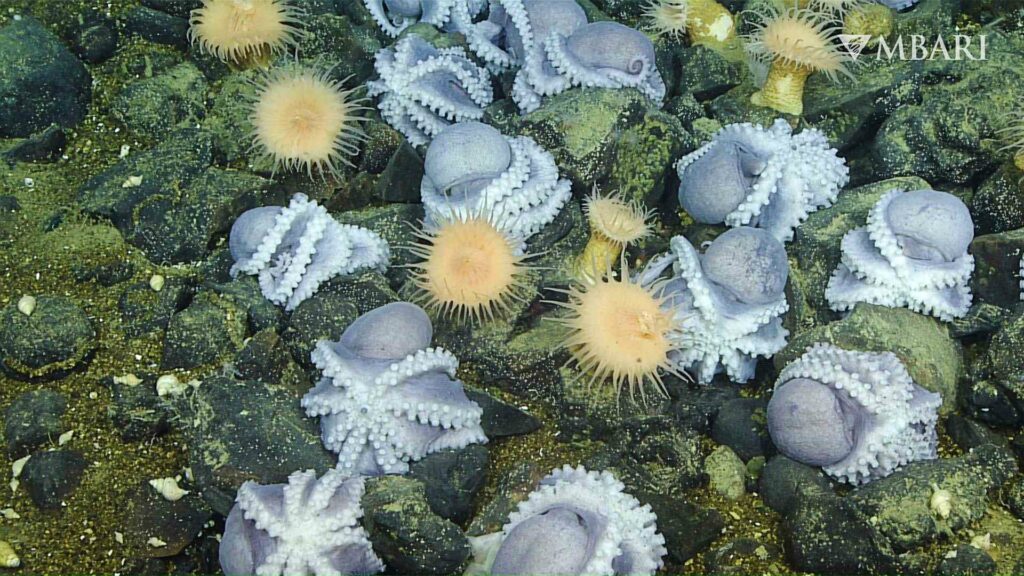
The massive concentration of octopuses in a single area also attracts predators and scavengers, aware that, like most cephalopods, pearl octopuses die after reproducing. A “rich community” of invertebrates was said to live alongside the nesting females to benefit from any unhatched eggs, vulnerable hatchlings or dead adult octopuses.
The team say that questions remain about where pearl octopuses go after hatching, how the species adapted to breeding in hydrothermal springs, how adult octopuses find the springs in the first place and what advantage individuals bred there hold over others bred elsewhere.
Davidson Seamount is protected as part of Monterey Bay National Marine Sanctuary. “Essential biological hotspots like this deep-sea nursery need to be protected,” says Barry. “Climate change, fishing and mining threaten the deep sea.
“Protecting the unique environments where deep-sea animals gather to feed or reproduce is critical, and MBARI’s research is providing the information that resource managers need for decision-making.”
The study was carried out by MBARI with NOAA’s Monterey Bay National Marine Sanctuary, Moss Landing Marine Laboratories, University of Alaska Fairbanks, University of New Hampshire and the Field Museum, and funded by the David & Lucile Packard Foundation. It is published in Science Advances.
Another volcanic find: 1m skate eggs
Further north off Canada’s Pacific coast earlier this year, a scientific team on the North-east Pacific Deep-Sea Expedition were exploring what they thought was an extinct deep-sea volcano only to find that it was still bubbling – and covered with what were estimated to be up to a million giant conical eggs.
The volcano, dubbed NEPDEP 58, lies 1.5km deep but rises to within 400m of the surface, and was one of more than 45 new seamounts mapped by the expedition. The eggs had been laid by Pacific white skate (Bathyraja spinosissima). The only other nursery for this species previously known was in Galapagos, though no more than a few dozen eggs had been found there.

To cap this discovery, the team then became the first to witness and document a deep-sea skate swooping down to lay an egg, an action captured by cameras on the ROV ROPOS. They believe that, even with the help of volcanic heating, it would probably take around four years for those eggs to hatch.
Also on Divernet: Deep octopus nurseries on ‘edge of human imagination’, Into the underworld: New ecosystem found beneath hot smokers, Aliens? Crabs? Bizarre deep-sea holes baffle scientists!, Vanishing frontier
